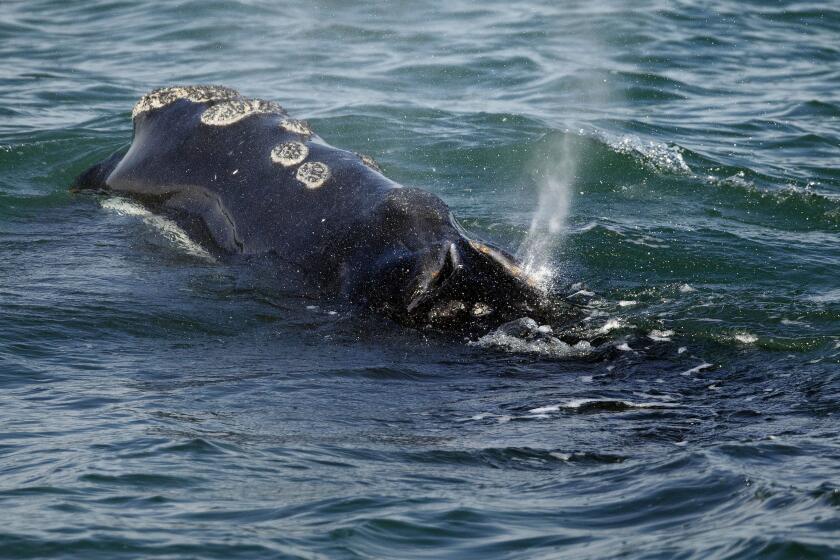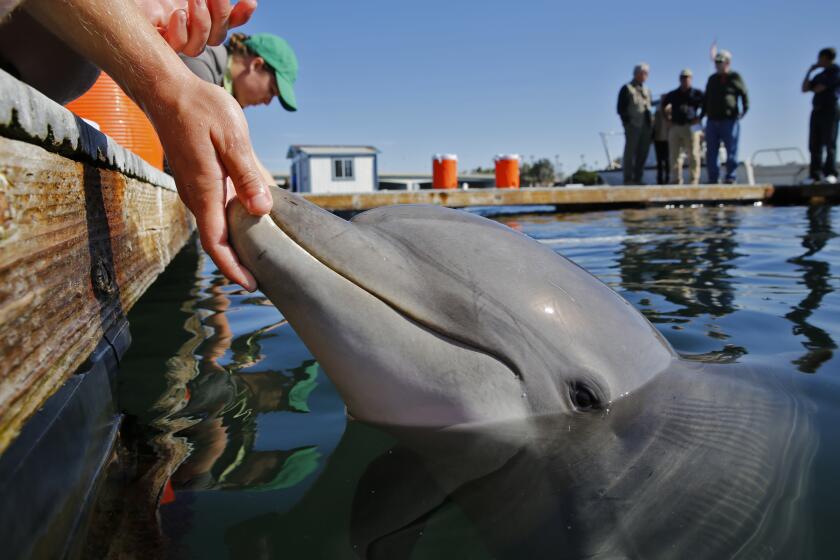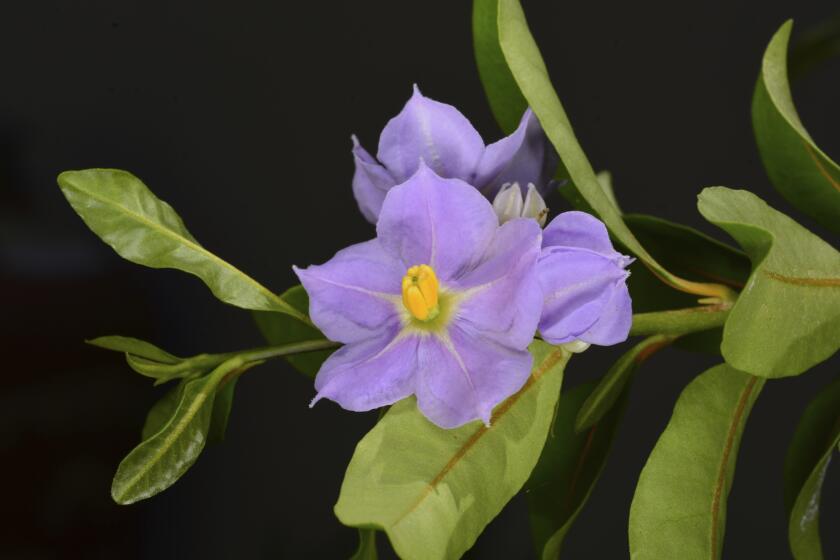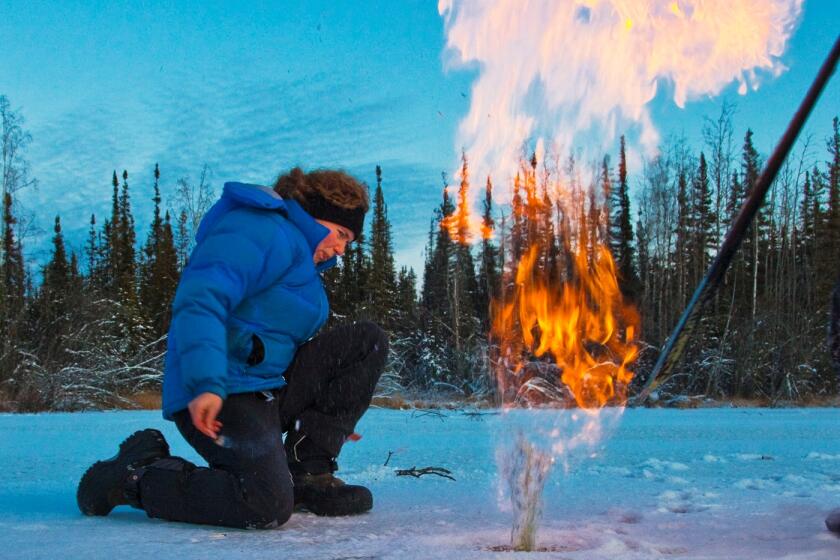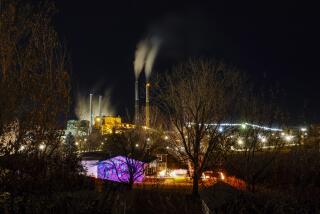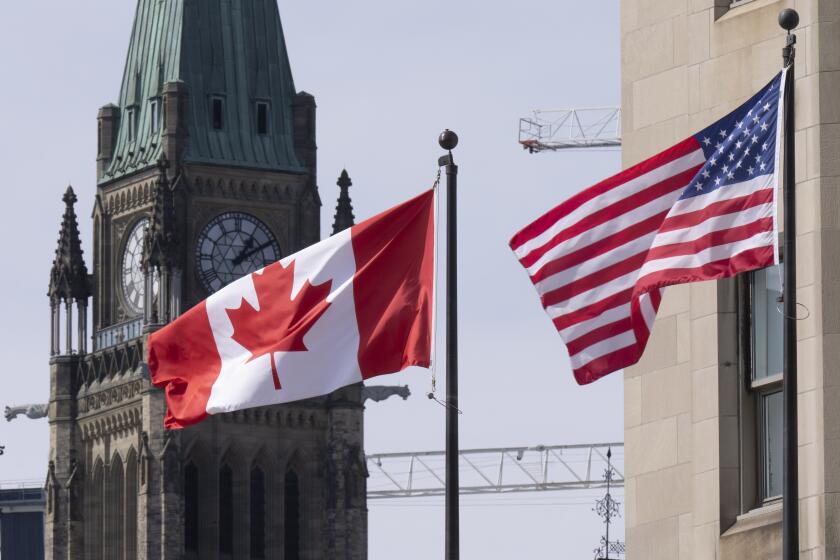Opinion: Protecting Alaska’s wilderness — and our Indigenous way of life — is critical to a green future
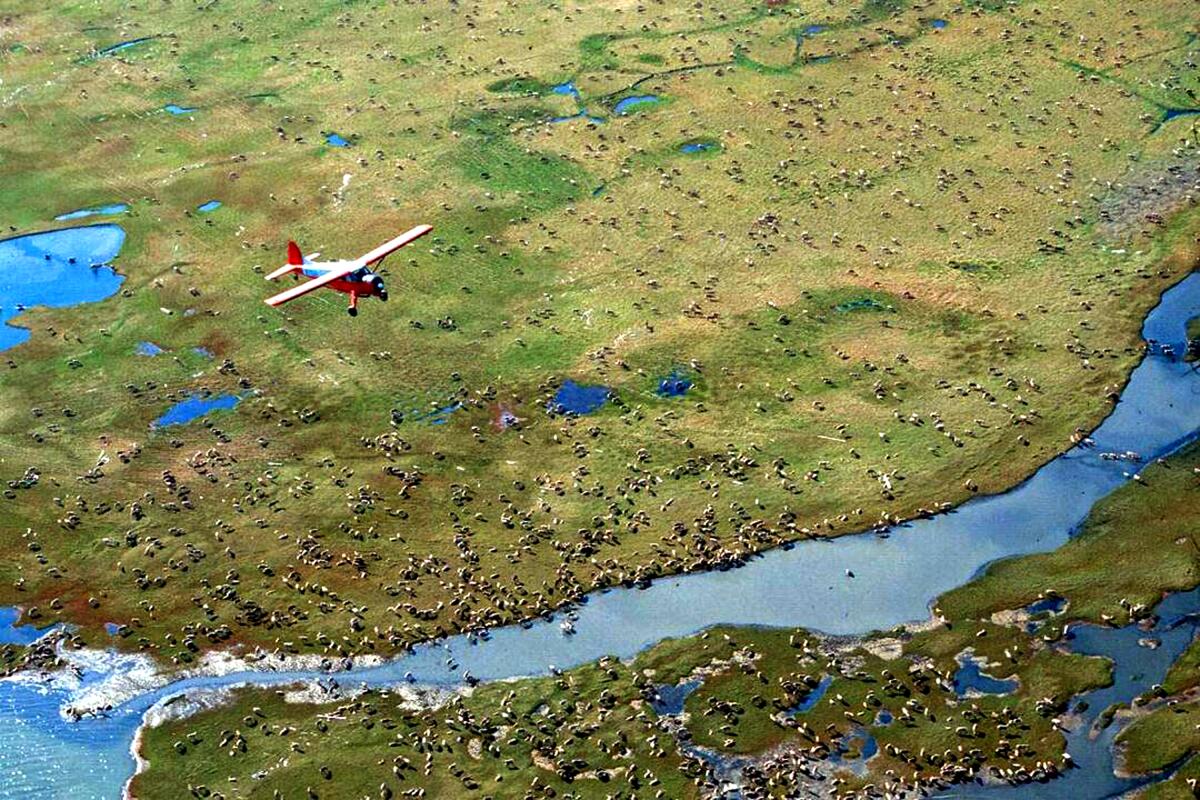
- Share via
“Alaska is America’s natural resource warehouse.” That is what Republican Gov. Mike Dunleavy told then-President Trump in 2018. But our home is far more than storage for the next fad of consumer desires in the Lower 48 states. In Alaska, we are facing an onslaught of proposed projects that threaten to destroy our way of life. Perhaps the most concerning of these is the proposed Ambler industrial mining road.
The proposal is to build a road to a potential mining district in remote northwest Alaska, near the Arctic. Proponents of the plan claim they would be able to access copper and other minerals that could be used for the U.S. tech sector and green energy products, such as wind turbines. But this road would cut through 211 miles of pristine wilderness, through the watershed that feeds thousands of rivers, streams and lakes and would deal a possibly fatal blow to the subsistence way of life my people have maintained for millennia.
New research shows how marine heat waves are forcing species to relocate, creating challenges for both the countries that are losing animals and the countries receiving them.
I teach my children to see this landscape as my ancestors did — it’s an intricately connected system we are only a small part of. We depend on the land, animals, water and fish for our food. Caribou, moose, ducks, geese, berries and fish make up most of our diet. We use every part of the animals we take, and depend on their hides and furs for our traditional clothing, tools, art and regalia.
The area that would be affected by the road includes the Brooks Range mountains; the Yukon, Koyukuk and Kobuk rivers; and the Kanuti National Wildlife Refuge and Gates of the Arctic National Park and Preserve, home to uninterrupted boreal forest, mountains, waterways and the 180,000 animals that make up the Western Arctic caribou herd. With the climate crisis, it is not just my people who will suffer at the destruction of my homelands but all of humanity. The true critical resource for a green future is intact wilderness.
We need a new approach to animal rights that centers on their freedom to act — not just protecting them from harm — to save them from injustice.
When this project was given a rushed green light under the Trump administration, 41 tribes, including my own, sued the federal government and asked it to follow its own policy to review what the effects of the project would be. This report was recently released by the Bureau of Land Management and describes only a fraction of the incredible consequences. Nearly 90 tribes expressed opposition to the road during the recent window allowing for public comment on the report.
The road would require 3,000 culverts, or water channels, 200 major bridges and would lead to contamination of waterways. Trucks transporting hazardous materials would travel the gravel Ambler mining road daily, over permafrost tundra and waterways including the federally designated wild Kobuk River. There would also be fragmentation of Western Arctic caribou migration paths at a level never before seen; disruption of salmon, sheefish and whitefish spawning grounds; thawed permafrost; and the introduction of trespassing, noise and worse to our traditional tribal lands.
Since the Endangered Species Act passed 50 years ago, more than 1,700 plants, mammals, fish, insects and more have been listed as threatened or endangered.
The huge corporations that want the road show up in villages promising it would help with affordable delivery of goods or bring jobs to Native communities. They claim it’s a single road leading to only one mine. We can see through these lies, however. A map of mining claims shows they have made plans to use the road to industrialize our entire homelands. The mining claims they have already made cover many hundreds of miles. The road would be close enough to villages to contaminate their water, kill off their fish and prevent the caribou they depend on from migrating. But it would still be dozens of miles away and restricted to industrial use alone. The promised jobs would be many miles away, and historically the only work made available to Native people would be low-paying and temporary. The road would be paid for by American taxpayers and used only by mining companies until they were done pillaging.
The companies that want the road and industrial mining development only care about profit. They use the constant talking point that we need the minerals for a green future. Yet the most recent data show that that claim is false and the only thing present in abundance is copper. A green future that destroys some of the last intact wilderness in the world defies logic.
Take it from a permafrost scientist who takes her kids on research expeditions: There’s a way to talk to children about global warming that encourages inquiry rather than despair.
The public comment period for the federal report on the road has closed. The Bureau of Land Management will make a decision in the coming months about whether to permit the road. In theory, the Biden administration recognizes the importance of Indigenous knowledge. A 2022 White House memo stated that despite controlling only 24% of ecosystems worldwide, Indigenous people’s lands contain about 40% of all “ecologically intact landscapes and protected areas left on the planet,” and a staggering 80% of the world’s biodiversity, suggesting that “the most intact ecosystems on the planet rest in the hands of people who have remained close to nature.”
Yet, the unified tribal opposition to the proposed Ambler road has been largely dismissed. We are calling on our fellow Americans to stand with us. If we raise our voices together, we may be able to reverse this disastrous path. Follow the Ambler mining road issue and urge the leaders and people of influence in your own states and communities to oppose the road.
Indigenous people are still fighting for basic rights, such as having access to clean water as well as the hunting and fishing rights we depend on; protecting our lands and practicing our religion and culture. I want my children to be able to live on their traditional homelands. I want them to eat salmon and whitefish, hunt caribou and moose, practice our ceremonies — and to teach their children to do the same.
Ricko DeWilde is from Huslia, Alaska, and lives a traditional Athabascan subsistence lifestyle by hunting and fishing in the remote Koyukuk River region of interior Alaska. He is a longtime advocate for Indigenous rights and appears on the National Geographic show “Life Below Zero.”
More to Read
A cure for the common opinion
Get thought-provoking perspectives with our weekly newsletter.
You may occasionally receive promotional content from the Los Angeles Times.
